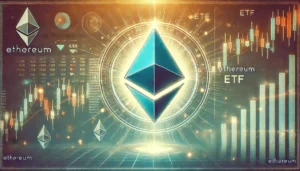Will ETH become a deflationary cryptocurrency?
3 min readThe long-awaited hardfork cryptocurrency ETH named London is here. It will include the implementation of a closely watched update called EIP 1559, which will significantly change the treatment of transaction fees and could theoretically lead to ETH becoming deflationary cryptocurrency.
Hardfork London will be introduced to the ETH network at Block 12,965,000, which ETH.org estimates will be mined later this Thursday. In addition to various other updates, it will include the introduction of the aforementioned update EIP 1559, which will change the treatment of transaction fees as follows:
- Transaction fees will not go to miners, but will be burned, which may lead to a reduction in the total number of ETHs in circulation
- In addition to the newly extracted ETHs, miners will be able to receive voluntary “tips”, which can be sent to them by the contracting authority if it wishes to speed up its transaction.
- Transaction fees are standardized across the entire network. If the network is congested, they will grow and, conversely, if there are few transactions, they will decrease
Will ETH become a deflationary cryptocurrency?
ETH is, in fact, an inflationary cryptocurrency that does not have a finite number defined (unlike BTC). In other words, ethers in circulation can increase indefinitely. However, the implementation of EIP 1559 may cause less ETH to circulate through mining than will be destroyed in the meantime.
This phenomenon could occur if the transaction fees paid in ETH are of such a high value that their destruction destroys more ETH than can be extracted in the meantime. In other words, will ETH be deflationary at some point – ie. more ETHs will decrease than there will be, it will depend on how many transactions and at what costs it can be realized in a given time. To illustrate, at this time of ETH’s greatest madness this year, transaction fees worth over billions of dollars were paid during the month, meaning that if EIP 1559 had already been implemented at that time, they would destroy more than $ 1 billion worth of ETH.
The path to deflationary ETH therefore leads through the growing use of this network, the increasing number of transactions and the associated overall increase in transaction costs. There are several models that estimate that in the future ETH could indeed be deflationary, ie. burning charges would destroy more ETH than it manages to create. But practice will show whether this will really be the case. If so, it could put upward pressure on the price of the cryptocurrency ETH, as its available supply would shrink.
Defi on ETH is blooming
ETH, meanwhile, continues to hold a dominant position in decentralized financing (DeFi). According to ConsFiSys, the number of addresses on the ETH network that used defi protocols increased by 65% in the second quarter of 2021, which is a significant increase compared to the total number of new addresses on the ETH in the same period (+ 10%).
At the beginning of July, 2.91 million addresses were used on the ETH network in interaction with DeFi. These were addresses that communicated with projects such as the decentralized Uniswap exchange, the crypto lending platform Compound or the liquidity fund KeeperDao.
The growth in popularity and use of DeFi in the first half of 2021 was also due to a significant influx of stablecoins into circulation. Their value at the beginning of July was up to $ 65 billion – since March 31 alone, there has been a 60% increase in such dollar-linked assets. Well and stablecoins such as USDT or USDC play an extremely important role in the DeFi ecosystem.






